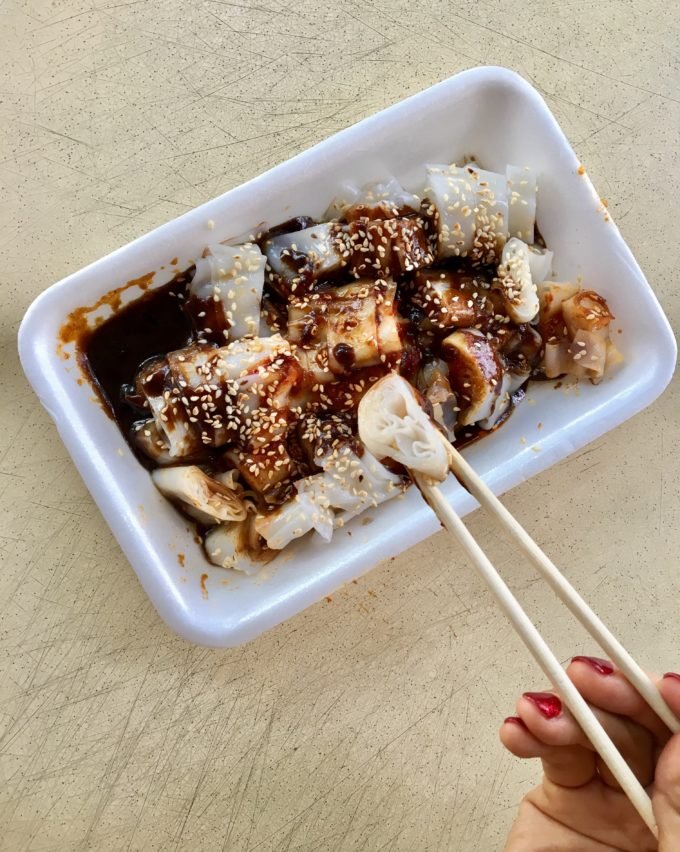
Seems Like You Could Leave Intestines Out of This Completely

Seems Like You Could Leave Intestines Out of This Completely
Chee cheong fun in Singapore
I call her Popo. It is among the first words of her native Cantonese dialect I learned to speak. From my earliest memory, my maternal grandmother has religiously abided by a daily morning ritual: a 45-minute brisk walk around the park, followed by fastidious scrutiny of the day’s catch at the wet market and rounds of artful haggling, before allowing herself kopi (coffee with condensed milk) at the local coffee shop. When I lived with her as a child, she would take me along on weekends.
“The early bird catches the worm,” she would say, rousing me at the crack of dawn. As if to prove her point, roosting Asian Koels would stir and begin singing to potential lovers, each distinctive “coo-ooh” more high-pitched than the one before. As a seven-year-old, morning workouts ranked next to dental check-ups on my ‘yuck list’. However, the anticipation of breakfast would power my legs all the way to the coffee shop, where my mother would be waiting with bulging paper packets of morning fuel. Amid animated adult chatter, I would wolf down chee cheong fun, a dish of Cantonese origin that directly translates to “pig intestine noodles.”
They are not Chinese chitlins. These steamed rice flour sheets are served rolled up like a hog’s tube-like offal. Hong Kong-style dim sum eateries traditionally fill the five-inch long rolls with char siew (barbecued pork) and dress them in light soy sauce. The Singaporean version is sweeter, unstuffed, and cut into bite-sized morsels.
After I moved back to my parents’ house, interactions with Popo grew less frequent and coffee shop breakfasts even rarer. Fast forward 20 years, Popo had lost her significant other; I had found mine. Lie-ins and Western-style brunches have replaced early morning chee cheong fun. I decided a breakfast catch-up was in order.
Weeks later, we reunite at our old stomping ground in the western heartlands of Singapore. Our trio sit shoulder to shoulder at a greasy table before a plate of gleaming goodness. A generous drizzle of sesame oil sheaths the rolls in a shiny coat. The comforting nutty aroma is a nostalgic reminder of Popo’s kitchen. Using chopsticks, I stake my claim on the nearest piece, coating it evenly with viscous sauce while scooping up as many toasted sesame seeds as possible, before sliding the warm wobbling pillow into my mouth.
“Mmm… ho waat.” Very smooth, my mother comments in Cantonese. A good rice roll is simultaneously soft, springy, and silky.
“Zan hai ho sek.” Really delicious, Popo chimes in with an approving nod.
I did not speak because these rolls tend to cool quickly into semi-hardened lumps and should be promptly polished off. But eating fast can be messy business. Overenthusiastic dipping unravels the bundles into long translucent ribbons. Every so often, a satiny morsel escapes the clutches of my chopsticks and plops ungracefully into the viscid pool, splattering dark caramel stains on my skin. The magic is in this thick, sweet gravy concocted from sugar, soybeans, and sesame paste, which seems to vary from hawker to hawker.
In these fast-changing times, I wish some things would stay the same. On this glorious Sunday morning, I am thankful that we are once again three generations of women bonding over breakfast.